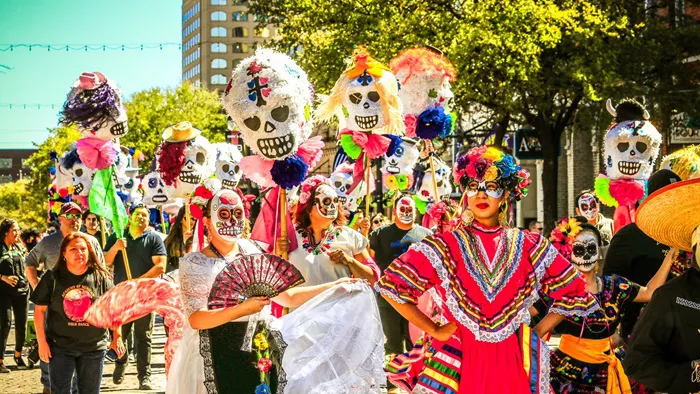The Month of Day of the Dead holds a special place in the hearts of many Mexicans and those who appreciate the rich cultural heritage of Mexico. Día de los Muertos, or Day of the Dead, is a vibrant and colorful celebration that honors deceased loved ones and commemorates their lives. In this comprehensive article, we delve into the significance of the Month of Day of the Dead, its traditions, customs, and how it is observed in Mexico and beyond.
The Significance of Day of the Dead
Día de los Muertos is a deeply rooted tradition in Mexican culture that dates back thousands of years. It blends indigenous beliefs with Catholic customs, creating a unique and distinctive celebration that has captivated people around the world. The celebration typically takes place over several days, with the main focus on November 1st and 2nd.
The Month of Day of the Dead: November
In Mexico, the Month of Day of the Dead is primarily celebrated in November, with preparations often beginning in late October. While the specific dates may vary, the heart of the celebration falls on November 1st and 2nd, corresponding to All Saints’ Day and All Souls’ Day in the Catholic calendar.
November 1st: Día de los Inocentes (Day of the Innocents)
Known as Día de los Inocentes or Día de los Angelitos (Day of the Little Angels), November 1st is dedicated to honoring deceased children and infants. Families create elaborate altars, known as ofrendas, adorned with marigolds, candles, photographs, and favorite foods and beverages of the departed. It is believed that on this day, the spirits of deceased children return to visit their loved ones.
November 2nd: Día de los Muertos (Day of the Dead)
November 2nd, Día de los Muertos, is when families honor deceased adults. Similar to November 1st, altars are prepared with offerings to welcome back the spirits of the departed. Families gather at cemeteries to clean and decorate graves, often bringing along music, food, and mementos to share with their loved ones. It’s a day filled with remembrance, reflection, and celebration of life.
Traditions and Customs of Día de los Muertos
Ofrendas (Offerings)
Central to the celebration of Día de los Muertos are ofrendas, or offerings, which are elaborately decorated altars dedicated to deceased loved ones. These altars typically feature photographs of the departed, along with items such as candles, flowers (especially marigolds), incense, food, and beverages. Each element holds symbolic significance, representing the elements of life and death.
Calaveras (Sugar Skulls)
Calaveras, or sugar skulls, are a quintessential symbol of Día de los Muertos. These intricately decorated candies are often inscribed with the names of deceased individuals and are placed on ofrendas as offerings to honor their memory. Sugar skulls come in various sizes and designs, ranging from simple to elaborate, and are an integral part of the festive atmosphere of the celebration.
La Catrina
La Catrina, a skeletal figure dressed in elegant attire, has become an iconic symbol of Día de los Muertos. Originating from a satirical print by Mexican artist José Guadalupe Posada, La Catrina represents the Mexican cultural attitude toward death. Often depicted wearing a hat adorned with flowers, she serves as a reminder of the universality of death and the importance of embracing life.
Pan de Muerto (Bread of the Dead)
Pan de Muerto, or Bread of the Dead, is a traditional sweet bread baked and consumed during Día de los Muertos. The bread is often decorated with bone-shaped pieces of dough on top, symbolizing the cycle of life and death. It is customary for families to place Pan de Muerto on ofrendas as offerings to their departed loved ones.
Observing Día de los Muertos in Mexico and Beyond
While Día de los Muertos originated in Mexico, its vibrant traditions and customs have spread to various parts of the world, thanks to the Mexican diaspora and cultural exchange. In Mexico, the celebration varies from region to region, with each locality adding its own unique flair to the festivities.
Oaxaca
Oaxaca is renowned for its elaborate Día de los Muertos celebrations, which include colorful parades, street processions, and intricate sand tapestries known as tapetes de arena. Families in Oaxaca create altars adorned with copal incense, traditional foods like mole and tamales, and intricately crafted decorations made from papel picado (perforated paper).
Mexico City
In Mexico City, the Día de los Muertos parade has become a major cultural event, drawing visitors from around the world. The parade features giant skeleton puppets, vibrant costumes, and live music, creating a festive atmosphere that celebrates the rich cultural heritage of Mexico.
United States
In the United States, Día de los Muertos is celebrated by Mexican American communities and others who embrace Mexican culture. Cities like Los Angeles, Chicago, and San Francisco host colorful parades, art exhibitions, and community events that showcase the beauty and diversity of Mexican traditions.
Conclusion
The Month of Day of the Dead holds a special place in Mexican culture and beyond, serving as a time to honor and remember departed loved ones. From the vibrant ofrendas and sugar skulls to the iconic La Catrina and Pan de Muerto, Día de los Muertos is a celebration of life, death, and the enduring connection between past and present.
As the world continues to embrace the rich cultural heritage of Mexico, the Month of Day of the Dead serves as a reminder of the importance of preserving traditions, celebrating diversity, and honoring the memory of those who have come before us. Whether observed in Mexico or around the globe, Día de los Muertos is a testament to the enduring spirit of community, love, and remembrance.

